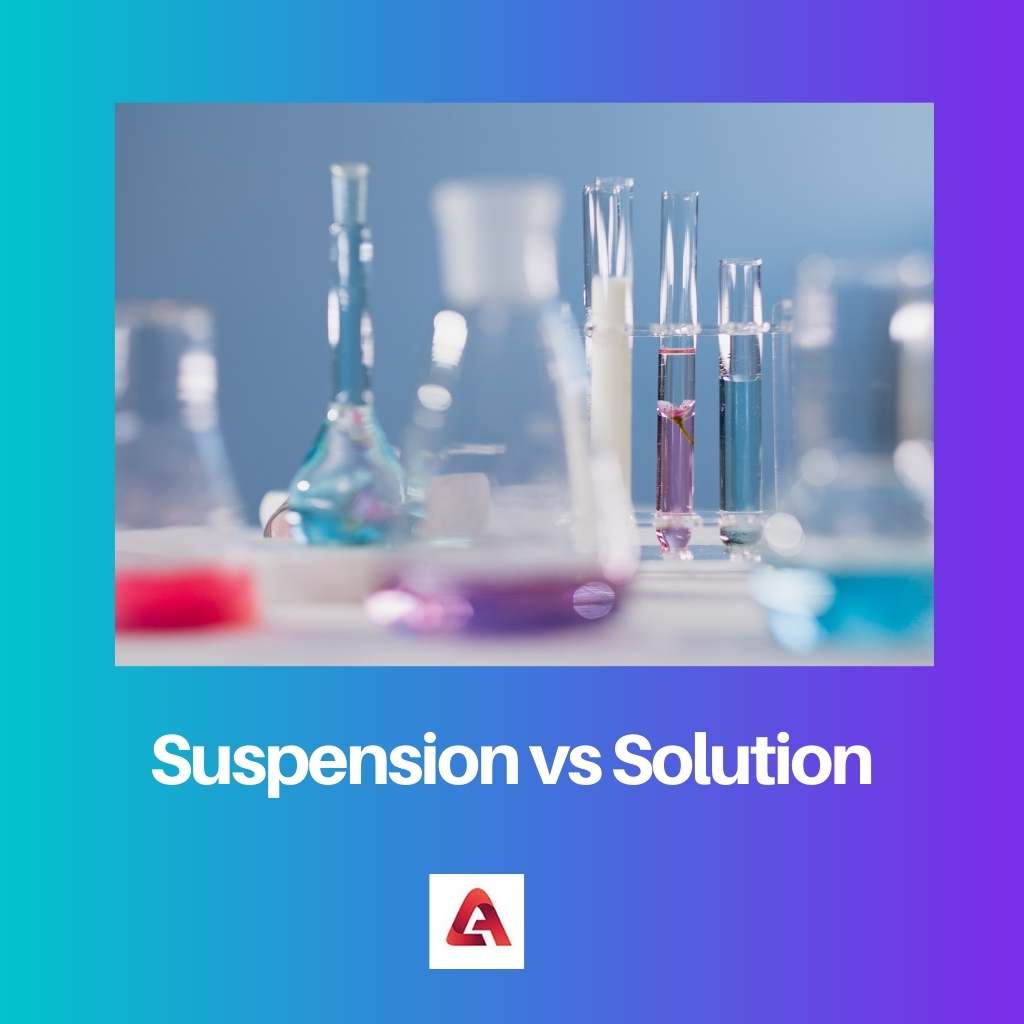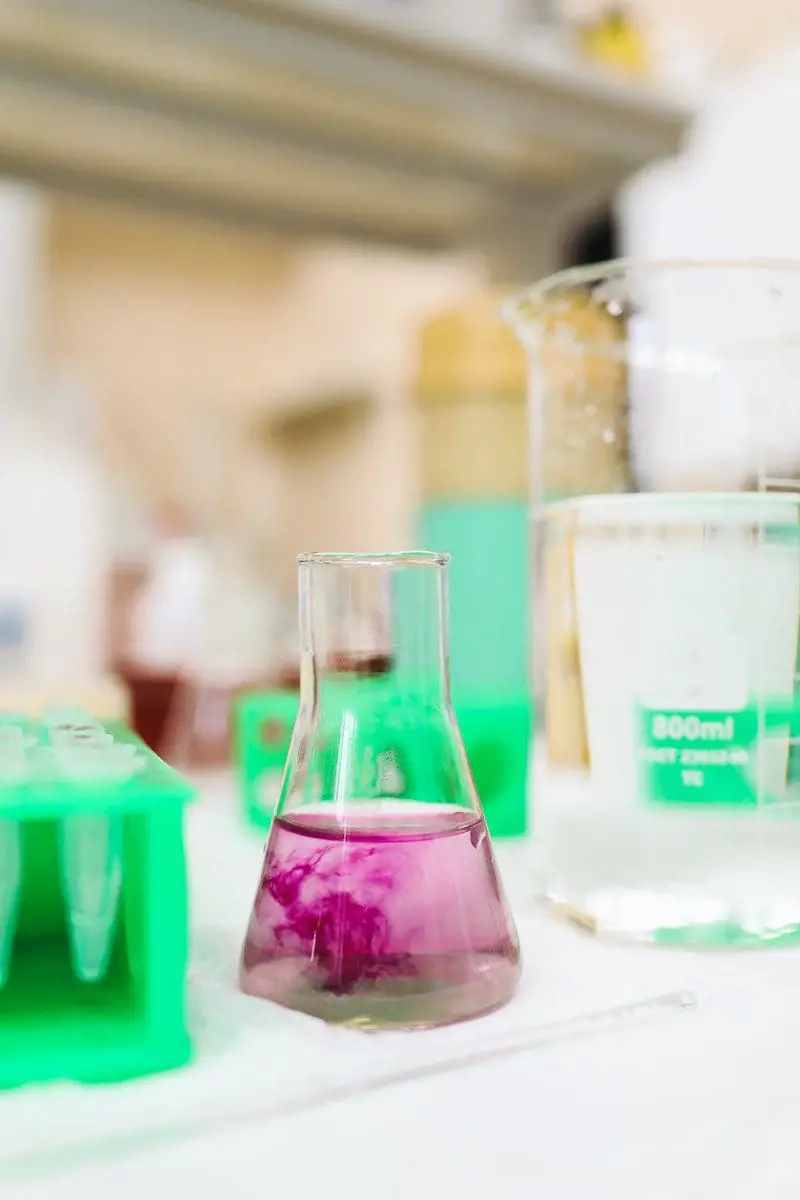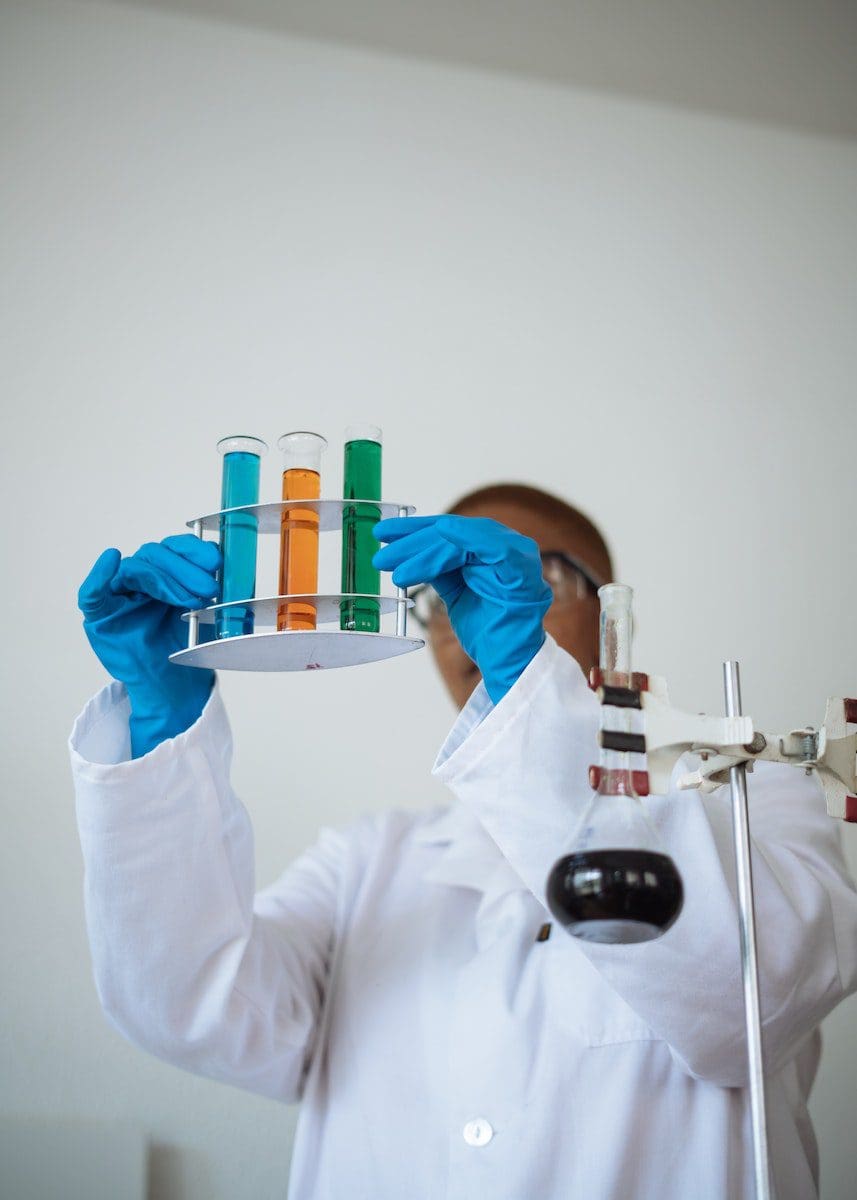Chemistry is a science which deals with matter. The property of each of the substances when they are combined or separated.
We even understand the changes matter goes through during a physical or chemical change. Suspensions and Solutions are combinations of two or more substances bonded.
Key Takeaways
- Suspensions are heterogeneous mixtures containing large particles that eventually settle, while solutions are homogeneous mixtures of solutes dissolved in a solvent.
- Suspensions appear cloudy or opaque, whereas solutions are clear and transparent.
- Suspensions can be separated through filtration, while solutions require evaporation or distillation.
Suspension vs Solution
The solution is a homogeneous mixture of two or more substances, molecules, ions, or atoms dissolved in a solvent. A suspension is a heterogeneous mixture of two or more substances dispersed throughout a liquid or gas, with larger particles that are not fully dissolved.

A suspension is a mixture formed by dangling solid particles in the liquid. Suspensions are heterogeneous as the two components do not mix evenly and appear as separate layers.
In suspension, it is cloudy as the material does not completely dissolve in the liquid. The size of the solute is more than 1000 nm and is separated through filtration.
A mixture of two substances is a solution. It is a homogeneous mixture as the dissolved material uniformly dissolves. The solvent is the dissolving material the solute is the substance that dissolves.
The components are tough to be separated. The mixture is transparent, and the dissolving material completely dissolves in the liquid as the size of the solute is less than 1 nm.
Comparison Table
| Parameters of Comparison | Suspension | Solution |
|---|---|---|
| Nature | It is a mixture that is heterogeneous. | It is a mixture that is homogenous. |
| Identification | It is cloudy, and a ray of light gets scattered. | It is transparent, and ray of light easily passes through it. |
| Filtration | The particles of a suspension do not pass through the parchment paper. | The particles of a solution easily pass through the parchment paper. |
| Particle Size | It is more than 100 nanometers. | It is less than 100 nanometers. |
| Example | Flour and water solution. | Sugar and water solution. |
What is Suspension?
Suspension is heterogeneous means the components that do not mix. The particles are visible and do not dissolve in the liquid.
The particle to be dissolved is more than 1000 nm. Thus the solvent does not dissolve entirely.
When soil dissolves in water, large particles are visible in the water. The large particles get separated through filtration.
Suspension is non-uniform in colour, and it may look cloudy or murky.
The particles are visible and floating in the mixture. The ray of light gets scattered as the particles are large when passed through it, for example, muddy water.
Emulsions are a form of suspension. Two immiscible(unmixable) liquids are shaken together, forming a cloudy mixture.
When they become static, the two layers are visible. Oil and water are perfect examples of emulsion.
A few oral medicines are suspended in nature, for example, milk of magnesia to treat antacids. Many sweeteners, flavours, and dyes that help to enhance the tolerability of the pill for a patient are some examples of suspension.
Examples of suspension:
- A mixture of chalk and water
- Muddy water
- A mixture of dust particles and air
- Fog

What is a Solution?
Our morning brew coffee is an apt example of the solution. The combination of coffee, sugar, and milk wakes all our senses.
A solution is a homogenous mixture of two components.
The two components are the solvent and the solute(the substance dissolved in the solvent). A homogenous mixture has a uniform composition, meaning the two are not distinguishable.
- A solute is the minor part of the salt in the saltwater solution.
- Solvent- This is the crucial part of the solution, the water in the saltwater solution.
The size of the solute is minuscule <1nm(Nanometre). We cannot distinguish the solvent or the solute even under the microscope.
The even distribution of the solute in the solvent makes the mixture homogenous. The components are difficult to separate.
For Example, NaCl is a white solid substance. After the NaCl breaks down, you cannot see the matter. The liquid becomes a transparent solution.
The solution is transparent as the solute is small, and this prevents the scattering of light. Water is the most evident solvent. A few gases, liquids, and even solids can be solvents.
The property of the solution is useful in industries. Turpentine is a solution utilized in the production of paints, dyes, and inks. The water solution is helpful in the food, textile, soap, and detergent industry.
The solid solution called alloys helps in the manufacturing of cars and other vehicles.
The best solutes are sugar, salt, and KCl(Potassium Chloride). Some examples of solutions are:
- Gas in Gas- Air
- Gas in Liquid-Soda
- Liquid in Liquid-Alcohol
- Solid in Liquid-NaCl in water
- The liquid in Solid-Mercury in Silver
- Solids in Solid- Alloys, Steel.

Main Differences Between Suspension and Solution
- A Suspension is a heterogeneous mixture. A Solution is a homogenous mixture.
- The particles in a suspension are easily visible. The particles in a solution are not visible to the naked eye.
- The constituent of a suspension is visible and separated by filtration. The process of filtration cannot separate the components in a solution.
- The light disperses through the suspension due to the particles present in it. The ray of light passes freely through the solution.
- In suspension, the components do not mix, it remains cloudy or mucky, and the particles are visible. In a solution, the components easily mix, and it is transparent.





